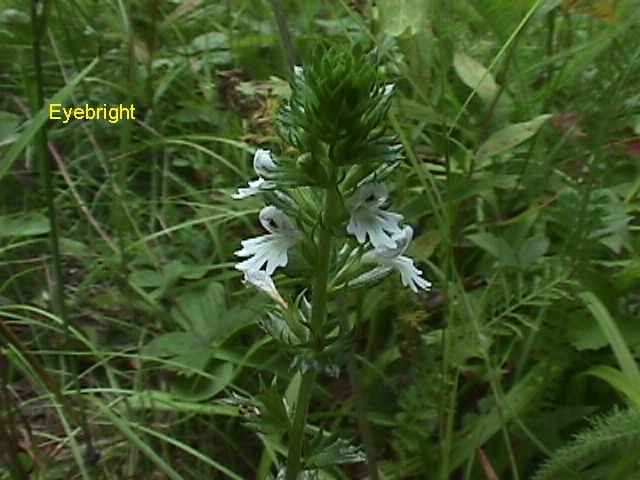


The flower of Eyebright, also known as Euphrasia and Ocularia, somewhat resembles a bloodshot eye, which may have been part of what led ancient peoples to value this plant for eye problems. An old French term for Eyebright was casse-lunettes, which means "break your glasses". The genus name, Euphrasia, is derived from the Greek Euphrosyne, who was one of the goddesses of the Three Fates, and whose name means "gladness". This refers to the gladness one felt when his/her vision was improved from using this herb. Eyebright was used primarily in the Middle Ages as a tonic because of its astringent properties. However, today Eyebright is used more frequently for relieving eye problems such as eye strain, pink eye and inflamed, irritated and sore eyes. Eyebright is high in iridoid glycosides, flavonoids, and tannins. The plant has astringent properties that probably account for its usefulness as a topical treatment for inflammatory states and its ability to reduce mucous drainage. Eyebright's antibiotic and astringent properties tighten membranes and mucus surrounding the eyes, effectively strengthening and improving circulation. Rich in vitamins A and C, Eyebright also contains tannins that are beneficial for reducing inflammation. Astringent properties found in Eyebright make it ideal for relieving excess mucus and infectious conditions generally associated with sinusitis allergies, colds and upper respiratory problems. Eyebright has recently been used for cleansing and purifying the blood, therefore stimulating healthy liver functions. The common name Eyebright also includes the species Euphrasia rostkoviana and Euphrasia americana, which are used interchangeably with Euphrasia officinalis.